Everyone's talking about customer experience. Nobody's talking about customer experience optimization. And one without another is like a ship lost at sea. It could sail away, but will eventually founder on the rocks. You can have the fanciest website, the most user-friendly interface, and the best product in the world, but if you don't optimize your customer experience and your product is poor, they're not going to come back.
And you?
Today, we won't cover why customer experience per se is important for each and every company. Instead, we'll focus on how companies can tackle it and why should they start to understand customer experience optimization today.
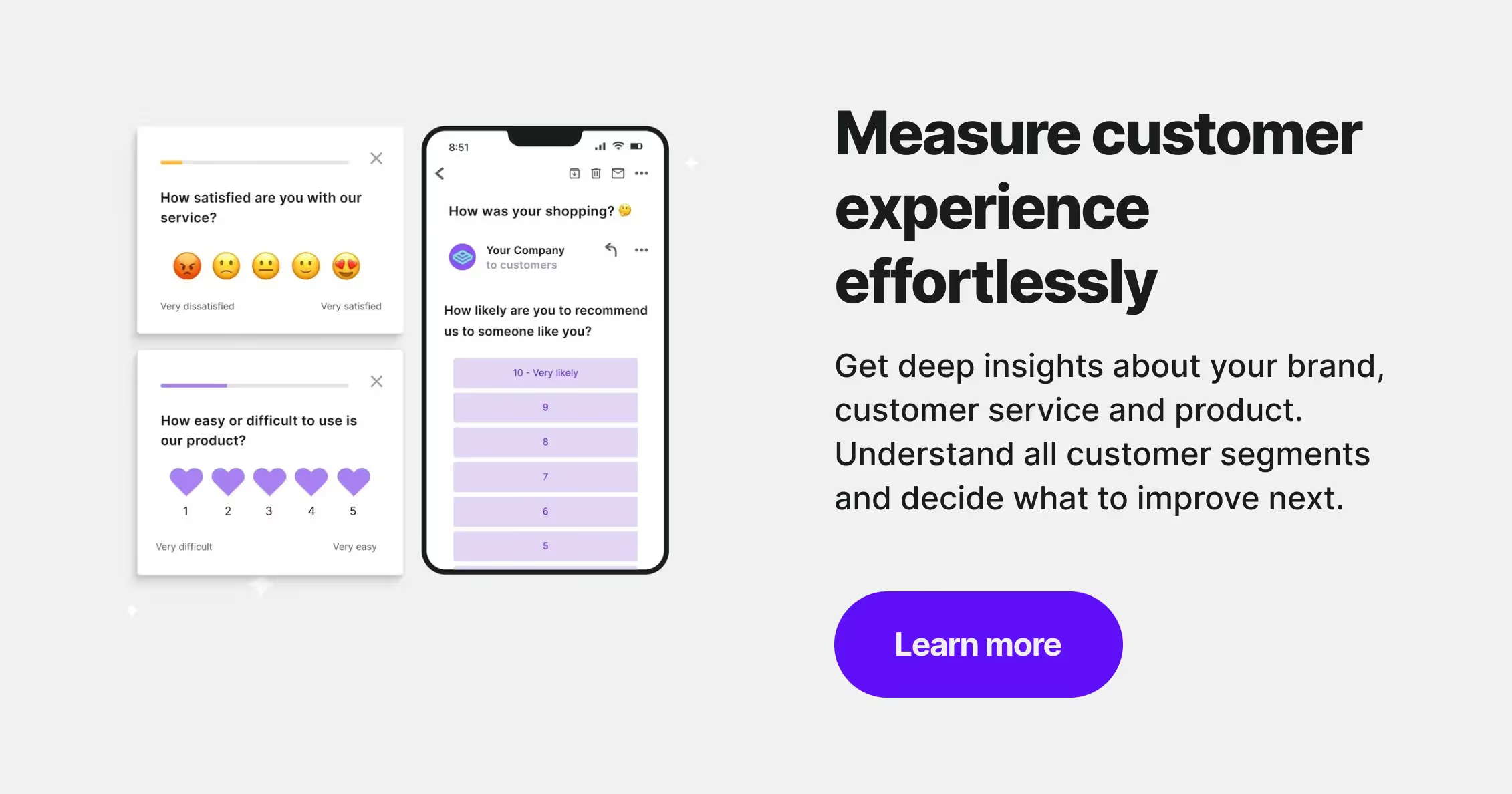
What is customer experience optimization (CXO)?
In short, customer experience optimization is the process of improving how your customers interact with your company. It's making sure that all touch points a customer has with your company - from finding out about your product to using it to support - meet or exceed their expectations. It applies both to new customers and your current customers.
Note that customer experience doesn't just live on the online market. It's the entire journey a customer takes with your company, both digital and physical. If you have a brick-and-mortar store, for example, CXO includes everything from how easy it is to find your company offline to how helpful and knowledgeable your staff are.
Customer experience optimization, as a whole, concerns all the ways companies can make digital journey better. It's not just about making a few small changes here and there, but taking a step back and looking at the customer experience from start to finish - and then finding ways to enhance it.
It's crucial to understand that customer experience optimization is not a one-time fix. Just as your customer's perception, needs and expectations change over time, so too must your customer experience. CXO is about continually improving the way you do business, so you can keep up with (and even exceed) your customers' expectations while reaching your business goals.
Why is customer experience optimization important?
Customer happiness = Customer loyalty
To start with, happy customers are loyal customers. They're more likely to come back and buy from you again, and they're also more likely to recommend you to their friends and family. In fact, according to a HubSpot report:
68% of customers say they would be willing to spend more with a company they believe provides excellent customer service.
Making your customers happy is often the first step towards excellent customer retention.
Happy customers also tend to be more forgiving. If you make a mistake, they're more likely to give you a second chance than someone who had a bad experience with your company.
(Your own) workflow optimization
Of course, CXO isn't just about making your customers happy. It's also about making your life easier. By streamlining your processes and making it easier for customers to do business with you, you can free up time and resources that can be better spent elsewhere.
Delivering a flawless customer experience often results in fewer support requests and less need for damage control. If your customers’ experience is positive, they're less likely to take to social media to complain about you - which can save you a lot of headache (and money) in the long run. This all contributes to a better and more streamlined workflow.
Increased conversion rates
Customer satisfaction leads to greater customer lifetime value. Simple as that.
If you can deliver an optimized customer experience, you're more likely to turn leads into paying customers and one-time buyers into lifelong fans. And that means more revenue for your business.
On the other hand, if you're not paying attention to CXO, you're likely leaving money on the table. In fact, poor customer experience costs businesses billions of dollars every year - which can easily be fixed with methods such as collecting feedback.
More cash, simply
Customer experience has a direct impact on your bottom line. In fact, according to Frost & Sullivan report:
Customer experience is to surpass price and product as the key brand differentiator.
What's more, according to PwC reports:
86% of customers are willing to pay more for a great customer experience.
This is not going to be a small or temporary trend, either. With the rise of digital natives - people who have grown up with the internet and are used to instant gratification - optimized customer experience is only going to become more important in the years to come. Exceptional experiences lead to a solid reputation for your company, better brand loyalty, and reaching business goals.
Practical ways to optimize your customer experience
1. Gather customer feedback
Customer experience begins with feedback. Step back and assess where you're at. And the best way to do that is to gather customer feedback.
.avif)
There are a number of ways you can go about this, but some of the most common include:
- customer surveys – asking your customers directly for feedback is always a good idea. You can do this through an email survey, a pop-up survey on your website, or even just by asking them in person the next time they're in your store. Check Survicate and see how these surveys can do to optimize your customer experience.
- social media – take a look at what people are saying about you on social media. Are they generally happy with their experience? Do they have suggestions for improvement?
- customer service logs – what are people calling customer service about? If you're seeing a lot of the same complaint, that's an indication that you need to make a change
- quick polls – you can use a tool like Survicate to quickly gather feedback from your customers. This is excellent for getting real-time customer feedback that you can act on immediately and use to optimize the customer experience.
- web and mobile app analytics – take a look at your website and app usage data. Where are people dropping off? What pages are they spending the most time on? This can give you insights into where your customer's journey is going rather on the bad customer experience side.
Gathering some data helps you draw conclusions so you can identify areas for improvement, track metrics that matter, and improve the user journey with viable changes.
Turning this data into action secure customers for your business.
2. Dig down into user session recordings and heatmaps
Take a closer look at how users interact with your website or app. While the aforementioned usage data can be a great source of quantitative insights, it doesn't always give you the full picture. That's where user session recordings and heatmaps come in.

User session recordings let you see how people interact with your site or app in real-time, which allows you to spot website usability issues. Heatmaps, on the other hand, show you where people are clicking, scrolling, and spending the most time on your site or app. This can be helpful for understanding what's catching people's attention – and what's not – so you can adjust customers journey.
Both of these tools can be used to improve the overall user experience on your website or app, and how your customers feel when they interact with it. This can be really helpful in identifying any friction points in your customer's journey. Are there certain pages that are causing people to drop off? Are people having trouble using a particular feature? Do they know how to navigate through your landing page?
You can significantly enhance your site's user experience by understanding how people engage with it and applying a comprehensive approach to fix it.
3. Analyze the customer journey data you've collected
Sit down and analyze customer data. It can give you more insights into customer experience optimization than you think it could. Start by looking for patterns and common themes.
Examples:
- if you're seeing a lot of people complaining about the quality of your customer support, this is an indication that you need to shorten the average response time.
- if you notice that people are having trouble signing up for a free trial, you can make some changes to improve the usability of that feature.
- if you find out that people are dropping off at a certain point in your sales process, you can experiment with pricing tiers.
- if you observe that repeat purchases don't occur, you can implement new strategies for more referrals to increase revenue.
- if you see that people are spending a lot of time on your website but not converting, you can try changing your call-to-action or adding an exit popup.
- if you see that people are not getting redirected to your website, you may want to audit your social media platforms to find better click through rate optimization tactics.
Making changes without analyzing customer data is a recipe for disaster in digital age.
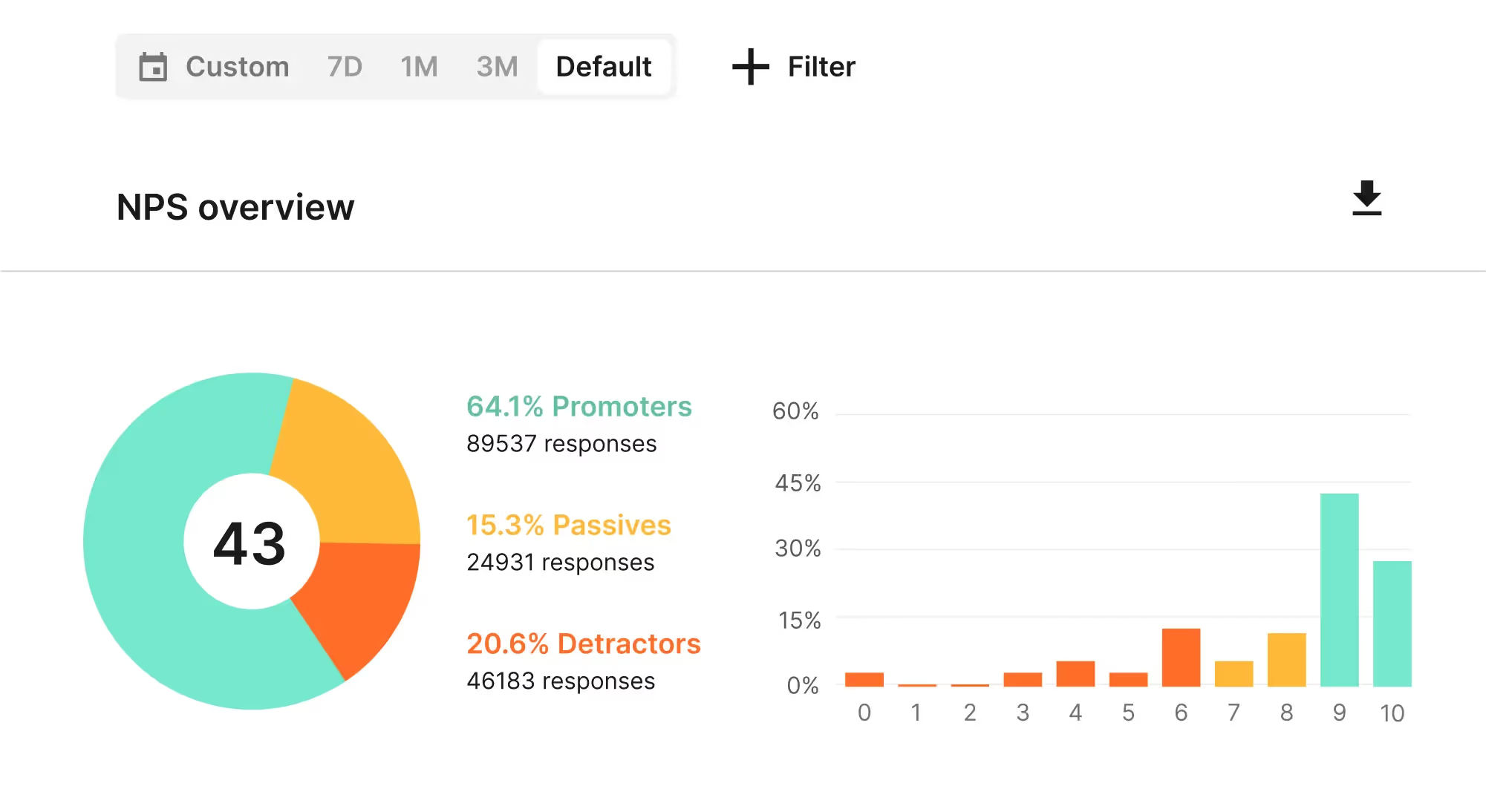
You could end up making changes that don't actually benefit the overall customer experience - and in some cases, make it worse. Most businesses are aware of customer's experience, yet do nothing, or very little, to change customer's perception.
4. Create and adjust your customer experience map
Now that you've gathered some feedback and insights, it's time to start making changes to get some new customers. While there are methods and tools you can use to start providing a great customer experience, one of the most effective is creating a customer experience map.
A customer experience map is a visual representation of your customer's journey. It shows all of the touchpoints they have with your company - from pre awareness, to purchase, to post-purchase - and how your customers feel at each stage. This is a good method to identify any areas that need improvement, and, in turn, start delivering spotless customer experience across your company's presence.
It's naturally not enough to just create a customer experience map – you actually need to start making adjustments. This could involve anything from changing the copy on your website to increase conversion rates, to introducing a new loyalty program to increase customer retention within your customer base.
5. Enhance customer touchpoints with personalization
While you may not be able to change past interactions, or make initial interactions highly personalized, from now on you should aim for delivering only personalized interactions for a better business's online presence.
You don't have to know everything about your customer when they only just entered your mobile apps or social media pages. However, once the initial purchase has been done, you are gaining insight into how to carry on this individual interaction and deliver relevant content or products to that particular person.
Analyze data to check what can be done so your customer's loyalty increases. With personalized experience, such as sending relevant landing pages or email content with offers, you impact overall customer experience and stand out from the crowd of other companies who provide bad customer experience through their marketing channels and their omnichannel customer experience.
6. Test, test, test!
Has anyone said "test it out"?
You can make all the changes you want, but if you don't test them, you'll never know if they're actually effective for customer experience optimization. This is where A/B testing comes in. An A/B test compares two versions of something to see which one performs better. The results can be mixed, but you need to get them to make informed decisions about your company development.
You can test anything you want, but some common things to test for customer experience optimization are:
- Headlines
- Calls-to-action
- Images
- Copy
- Page layouts
You should also test the above mentioned elements for your mobile customer experience. If you want to deliver an excellent customer's experience, you need to be sure you deliver it across all platforms and devices.
You can use A/B testing to determine whether your changes are actually working. It's okay if they're not, you can make adjustments until they are!
7. Implement changes and track results to optimize customer experience
Let's see if your efforts are actually paying off, shall we? Monitoring your customer experience optimization efforts can be done in a variety of ways. One way is to simply track the overall performance of your website or app. This could involve things like conversion rates, bounce rates, and time on site. You can also track specific metrics that are relevant to your business.
For example, if you run an eCommerce store, you might track the average order value or the number of items per order. This may mean more work on your part, but it'll be worth it to see if your changes are actually making a difference for great customer experience.
Another way to track customer experience optimization results is to survey your customers after they've interacted with your brand. This could be after they make a purchase, or at any other point in their customer journey. For example, you may consider sending an NPS (net promoter score) survey in a follow-up email about their experience. This will give you valuable customer data you can use to optimize customer experience even further.
8. Make customer experience optimization a part of your business
Congratulations! If you've made it this far, you're almost officially a customer experience optimization pro now. We're sorry to break it to you though, but your work doesn't stop here. Customer experience is an ever-evolving field, which means there's always room for improvement.
It's important to understand customer experience optimization and make it a part of your business, rather than something you only take care of when there's a problem. It's all fun and games as long as you have happy customers and high customer lifetime value, but if anything drops, customer experience may turn out to be the reason. That's why you should optimize your customer experience on a regular basis. To do so, you should:
- introduce customer experience KPI
- shave regular customer experience check-ins with your team
- set aside time for customer research
- create a customer-centric culture for better customer satisfaction
- take care of mobile app experience
- work with your customer success team leaders on meeting customer expectations
- play with artificial intelligence solutions to understand your customers better
This means making it a part of your company culture and always looking for ways to better the customer experience. It may seem like a lot of work, but trust us – it's worth it.
Customer Experience Optimization: no longer a "nice to have"
A few years ago, customer experience optimization was seen as a "nice to have." Something that would be nice to improve, but wasn't necessarily essential for business success. But times have changed.
As the competition has increased and customers have become more demanding, businesses have realized that they need to start paying attention to the experience they're providing to create a significant competitive advantage. Otherwise, most companies risk losing customers to a competitor who does.
Customer experience optimization is an ongoing process, which means you'll need to continuously make changes and track the results. But if you do it right, it'll be worth it for your business - and your customers. The best way to start optimizing your customer experience is to start measuring it today. Sign up for Survicate's 10-day free trial to find out how your customers feel about your product and service today!








.webp)

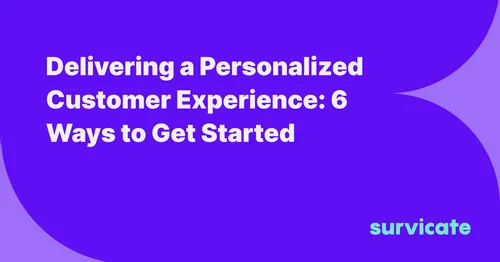
.webp)
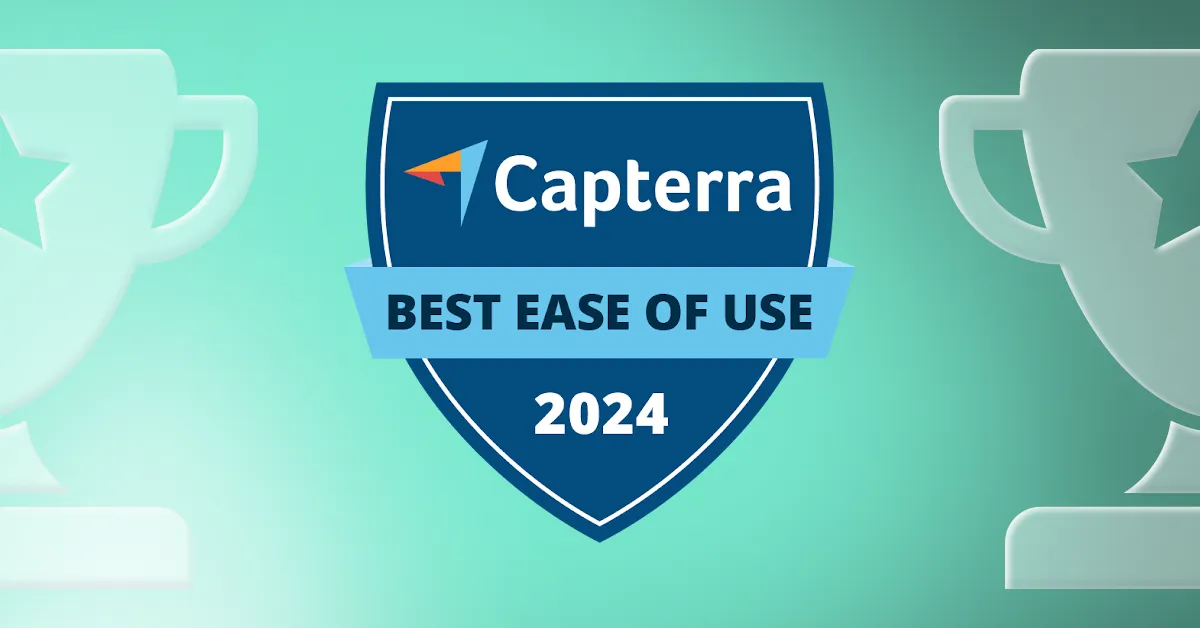
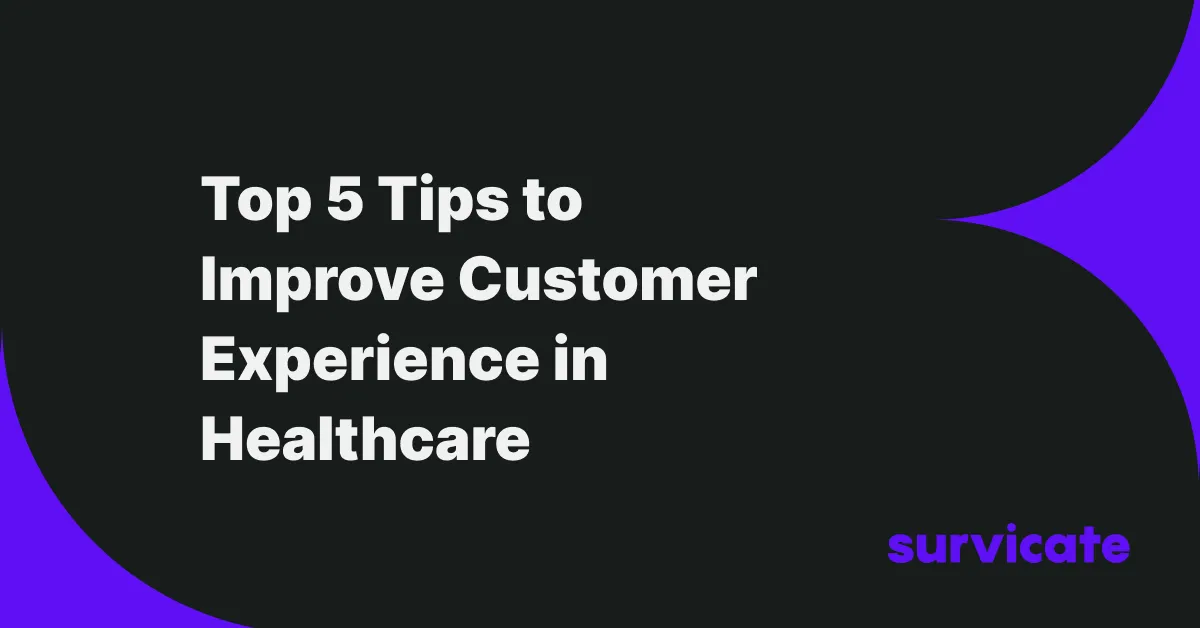
.svg)

.svg)



